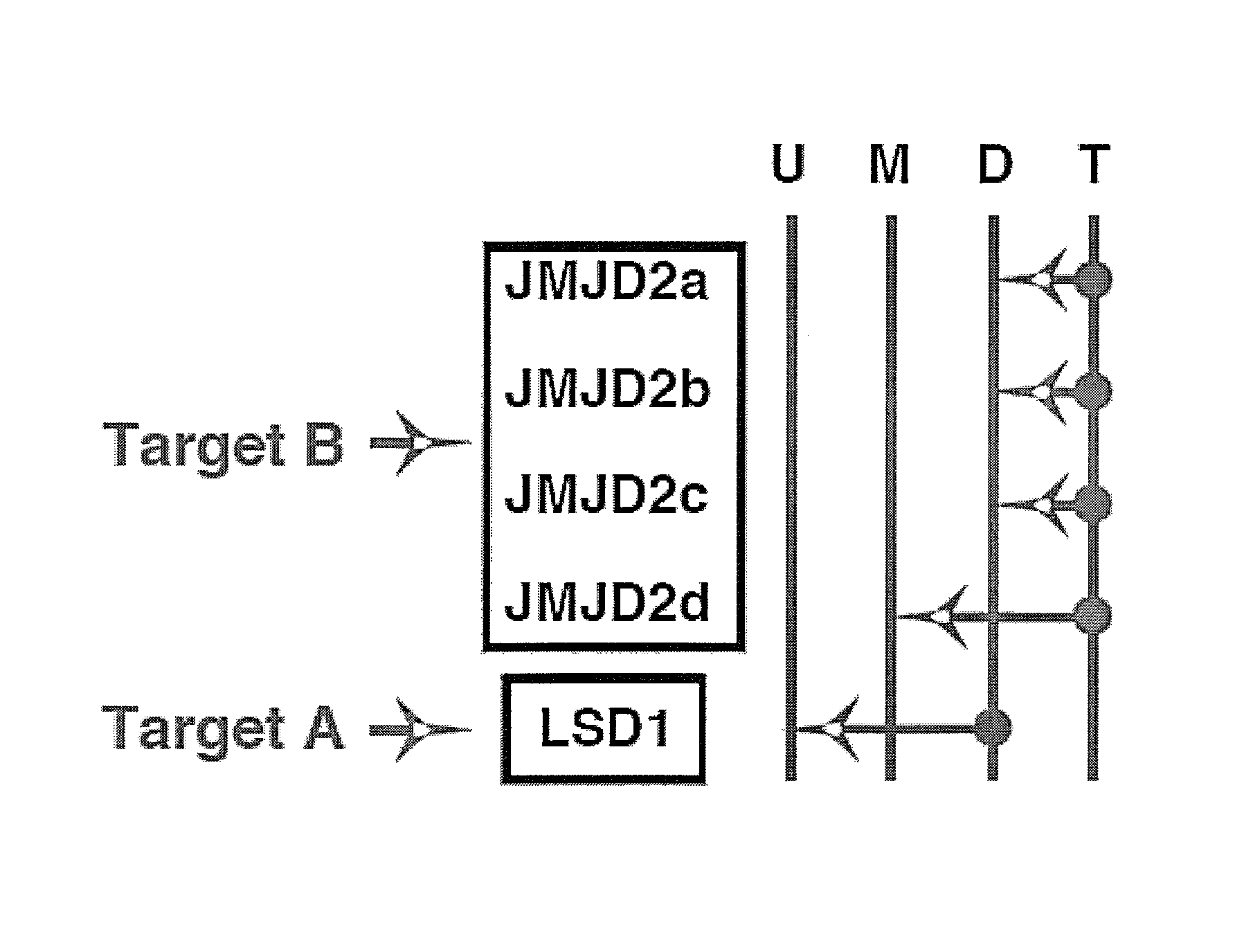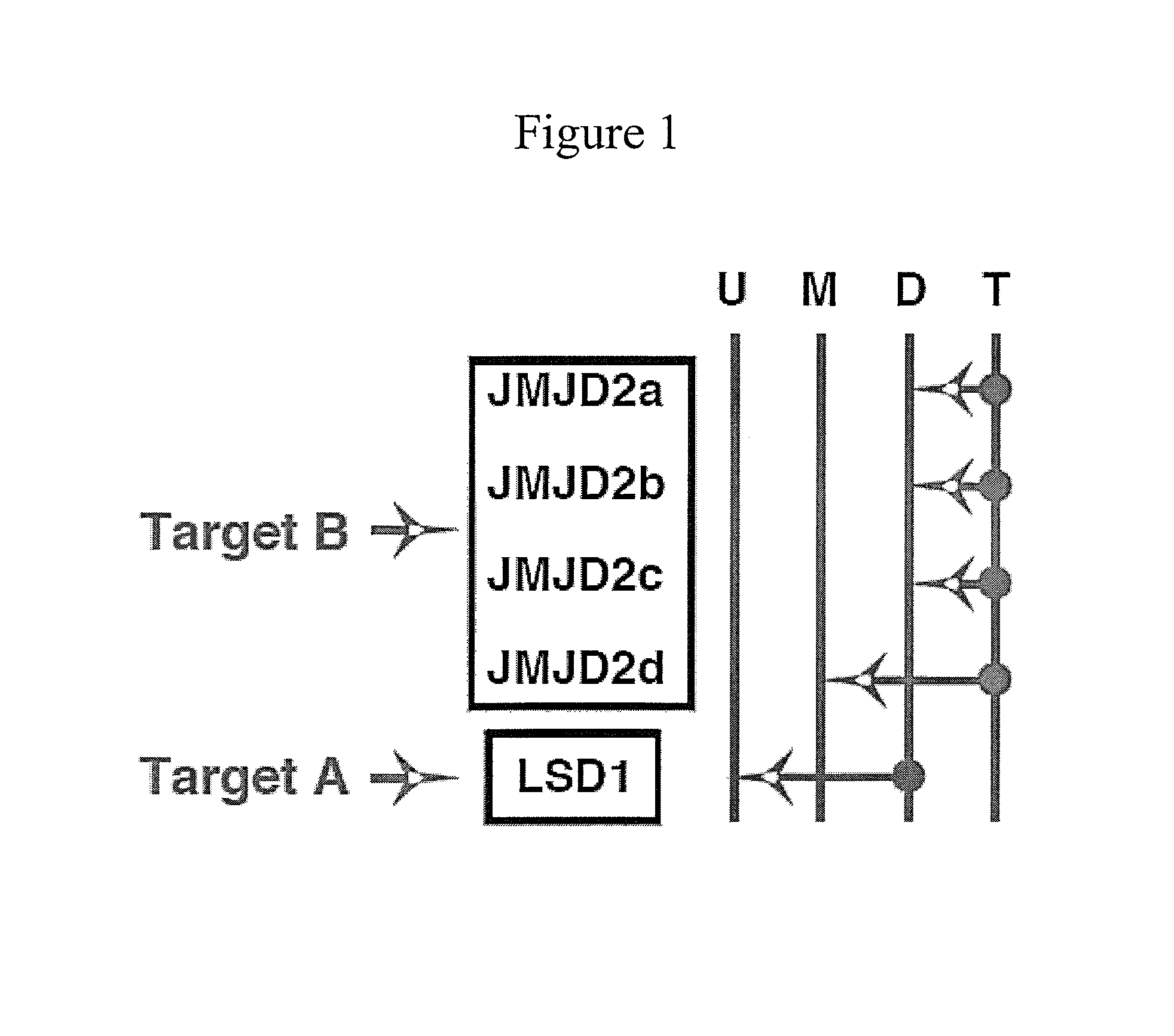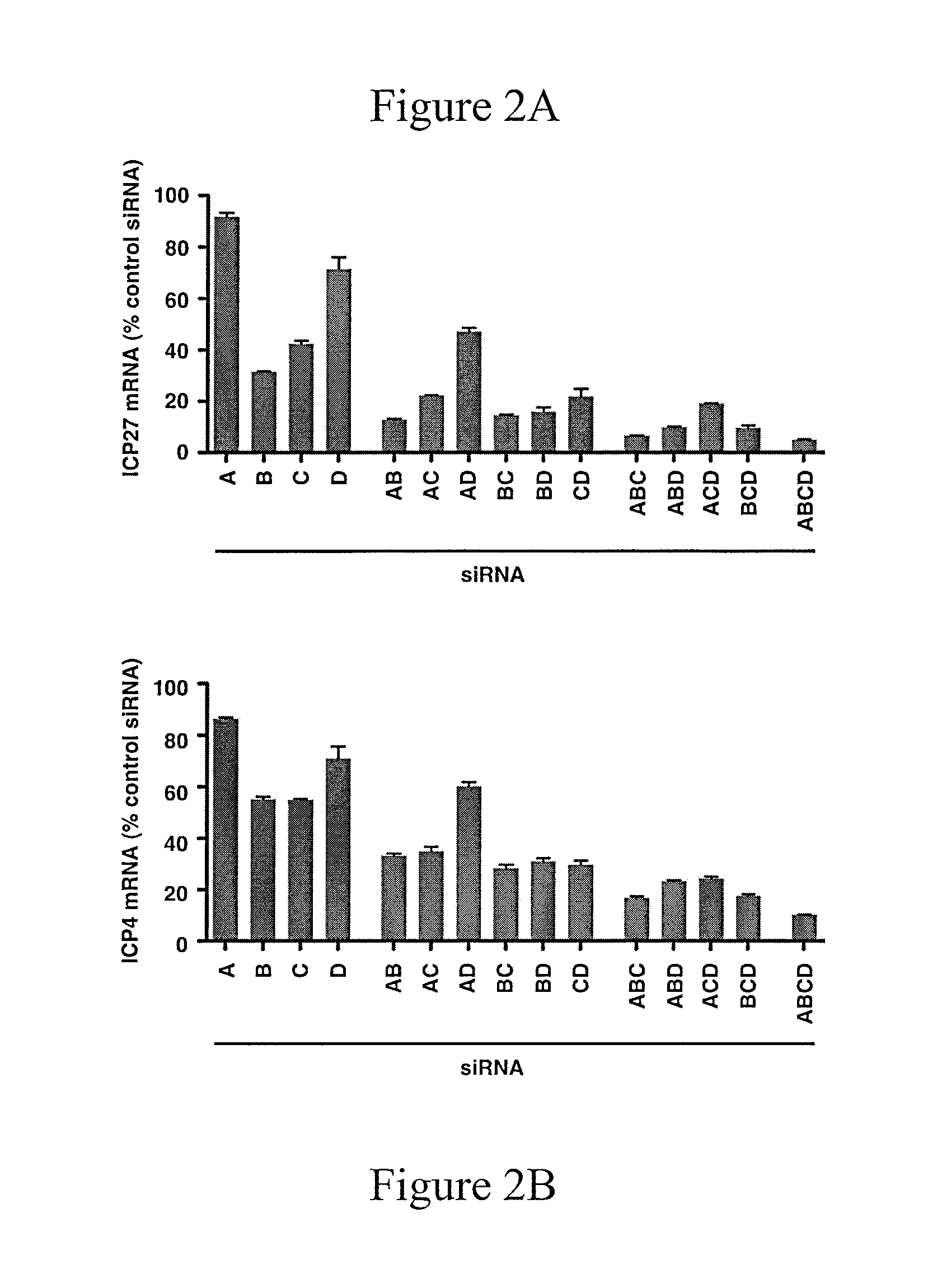Method of preventing or treating viral infection
a technology of viral infection and treatment method, applied in the field of preventing or treating viral infection, can solve the problems of unmet needs, increased morbidity in infants and individuals with compromised immune systems, and increased severe illness, so as to prevent or treat viral infection
- Summary
- Abstract
- Description
- Claims
- Application Information
AI Technical Summary
Benefits of technology
Problems solved by technology
Method used
Image
Examples
example 1
[0189]This example demonstrates the inhibition of members of the JMJD2 family of histone demethylases by siRNA, in accordance with an embodiment of the invention.
[0190]The antibodies and primers used in this study are described in Liang, Vogel, Narayanan & Kristie, Nature Med., 2009, 15:1312-1317, incorporated herein by reference.
[0191]siRNA sequences used were
[0192]
(SEQ ID NO: 1)JMJD2A: GAACCGACCUCCAAACUUU(SEQ ID NO: 2)JMJD2B: GCAGGCACCGUCCACAUUU(SEQ ID NO: 3)JMJD2C: GAGAGGACAUCUACACUUU(SEQ ID NO: 4)JMJD2D: CUGGAAGAACCGCAUCUAUAA.
[0193]siRNA depletion of JMJD2 family members reduces HSV-1 IE gene expression. FIGS. 2A and 2B show herpes simplex virus Immediate Early genes ICP27 and ICP4 mRNA levels after administration of siRNA directed against JMJD2a (A), JMJD2b (B), JMJD2c (C), JMJD2d (D), and combinations of these. Hela cells were transfected with 1 nmol of siRNAs against the indicated JMJD2 histone demethylase or control siRNA for 48 hrs. Cells were subsequently infected with 0.1...
example 2
[0197]This Example demonstrates the inhibition of the catalytic activity of members of the JMJD2 family of histone demethylases by a small molecule inhibitor that blocks viral immediate early gene expression during lytic infection with HSV-1 and reactivation from latency, in accordance with an embodiment of the invention.
[0198]Antibodies and primers used are described in Liang, Vogel, Narayanan & Kristie, Nature Med., 2009, 15:1312-1317.
[0199]HSV-1 IE protein levels of ICP4 decrease in cells infected in the presence of DMOG. HeLa cells were infected with HSV-1 at 0.1 PFU / cell for 3 hrs in the presence of increasing concentrations of DMOG. Cells were harvested and the levels of viral IE proteins (ICP4 shown) were determined by quantitative western blot analyses. As the concentration of DMOG is increased, the levels of ICP4 decrease (FIG. 6).
[0200]HSV-1 IE mRNA levels of ICP4 and ICP27 decrease in cells infected in the presence of DMOG. Human foreskin fibroblast (HFF) cells were infec...
example 3
[0208]This example demonstrates the inhibition of the catalytic activity of members of the JMJD2 family of histone demethylases by small molecule inhibitors that block viral immediate early gene expression during lytic infection with HSV-1 and reactivation from latency, in accordance with an embodiment of the invention.
[0209]All experiments were performed as described in Liang et al., Sci. Transl. Med. 5, 167ra5 (2013). N-(3-(dimethylamino)propyl)-4-(8-hydroxyquinolin-6-yl)benzamide (designated ML324) has the following characteristics: N-(3-(dimethylamino)propyl)-4-(8-hydroxyquinolin-6-yl)benzamide (1). LC-MS: rt (min)=3.033; 1H NMR (400 MHz, DMSO-d6) δ 1.84-1.98 (m, 2H), 2.79 (s, 3H), 2.80 (s, 3H), 3.12 (ddd, J=10.2 Hz, 5.4 Hz and 5.2 Hz, 2H), 3.37 (q, 2H), 7.50 (s, 1H), 7.66 (dd, J=8.2 Hz and 4.3 Hz, 1H), 7.84 (s, 1H), 7.88-7.94 (m, 2H), 7.96-8.02 (m, 2H), 8.50 (d, J=8.2 Hz, 1H), 8.71 (t, J=5.6 Hz, 1H), 8.90 (d, J=4.1 Hz, 1H), 9.34 (brs, 1H); HRMS (ESI) m / z (M+H)+ C21H24N3O2, 350....
PUM
| Property | Measurement | Unit |
|---|---|---|
| concentrations | aaaaa | aaaaa |
| concentration | aaaaa | aaaaa |
| time | aaaaa | aaaaa |
Abstract
Description
Claims
Application Information
 Login to View More
Login to View More - R&D
- Intellectual Property
- Life Sciences
- Materials
- Tech Scout
- Unparalleled Data Quality
- Higher Quality Content
- 60% Fewer Hallucinations
Browse by: Latest US Patents, China's latest patents, Technical Efficacy Thesaurus, Application Domain, Technology Topic, Popular Technical Reports.
© 2025 PatSnap. All rights reserved.Legal|Privacy policy|Modern Slavery Act Transparency Statement|Sitemap|About US| Contact US: help@patsnap.com



